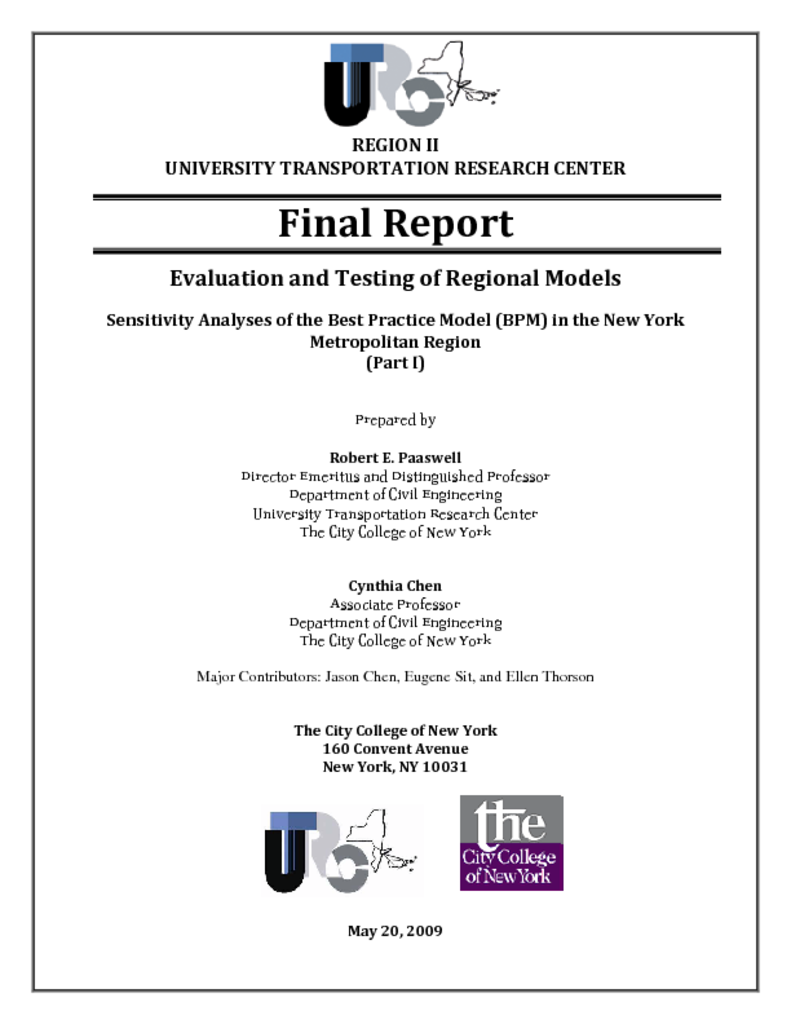<p>Activity-based microsimulation models are gaining increasing attention from MPOs around the country. These models earn their reputation by having shown their theoretical superiority over the traditional four-step models. The NYBPM (New York Best Practice Model) model is one of a relatively few operating activity-based microsimulation models in the country and thus provides us a working platform to test their practical advantages over the traditional four-step models. We accomplish this goal by examining the sensitivity of the model in response to changes in the input. More specifically, we conduct a series of sensitivity analysis to the NYBPM by modifying the inputs relating to changes in policy, socioeconomic characteristics, and population and employment levels and comparing the results to those in the 2002 base scenario. The results suggest that the model results are mostly consistent with our expectations, except the total journey productions when we change the population and employment levels in selected locations. While the results provide empirical support to the model and validate its wide applications in the region, they call for further investigation in the journey production aspect.</p>




